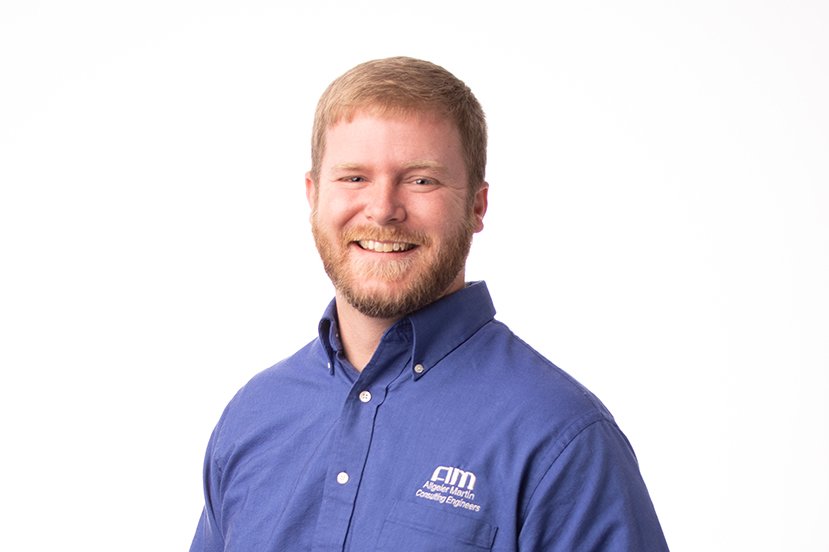Managing Supercritical Velocities with Plunge Pools and Volkswagens
What do you have when you combine narrow valleys, tall roadway embankments, and steep culverts? A recipe for erosion.
Southeast 3rd Street in Lee’s Summit, MO crosses two major streams within 0.3 miles. The roadway embankment is 16’ high over Cedar Creek and 30’ high over Tributary C5. Both culvert structures were experiencing erosion at the downstream ends due to steep culverts. Even though both structures had the same erosion cause, each structure had its own solution to the problem.
Why Supercritical Velocities Are Not So Super
So, what makes a culvert “steep”? A culvert is “hydraulically steep” when culvert velocities become supercritical, even if the culvert slope is less than 1%! Steep culverts are not a problem if the velocities are properly addressed. When the high-velocity flow exiting the culvert meets the lower-velocity flow in the stream, the energy must be dissipated somehow.
So, where does the energy go? That depends upon the geometry of the site. Flows exiting the culvert do not instantly expand to fill the channel. This produces areas of ineffective flow to the sides of the culvert, in the form of slower-moving eddies. A hydraulic jump can occur when velocities are supercritical, and then these “eddies” can become large and powerful.
Cedar Creek Eddie Damage
In the case of the Cedar Creek culvert, there was a steep hillside on the east and a weak shale layer underneath the box culvert. Supercritical velocities exiting the culvert (over 19 feet per second!) caused a large, powerful eddy on the west side of the culvert that started eroding the roadway embankment. They also created a 6’ deep scour hole at the culvert exit. Scour holes are not always bad since they can act as a natural energy dissipator. However, the weak shale had started eroding from underneath the culvert.
For Tributary C5, there was a wooded bank and a left bend immediately downstream of the box culvert, then another bend to the right, all confined in a narrow valley. Velocities exiting this culvert were more than 20 feet per second! The first bend in the stream confined the energy dissipation to an existing shallow scour hole and to the west side of the culvert, where a powerful roller of an eddy would form. This roller was eroding the base of the steep, 30’ tall roadway embankment. A storm sewer outlet high up on the embankment complicated matters at this site. Runoff from this pipe flowed down the embankment and had caused further erosion in the form of a deep ditch. Any erosion solution at this site also had to deal with the pipe exit.
Rip Rap the Size of Volkswagens?!?
Water erosion is a perfectly natural process. It happens when velocities in water are high enough to move particles of the underlying material. So, if you want to stop erosion, you can either prevent fast velocities in the first place or use bigger particles. The problem with supercritical velocities is that the “particles” can start to look like rip rap the size of Volkswagen Beetles! No contractor wants to haul those.
Same Problem, Different Solutions
At the Cedar Creek culvert, the chosen solution was to line the existing scour hole with a mixture of carefully placed rip rap, ranging in size from 24” up to 42” (Not quite Volkswagen size, but still very large.) The larger stone was placed in a ring of “teeth” at the edge of the existing scour hole and used to lock in the smaller stone. This gave the benefit of erosion control without the need for an entire mat of 42”-plus-size stone.
Cedar Creek Rip Rap
To add to the challenge, the Army Corps of Engineers required that some of the rip rap be placed on a 10:1 slope to allow for fish passage. This required the use of a rock sill on the upstream end of the culvert to force the fish to travel in the west cell of the culvert and down a 10:1 exit slope. The other two cells still utilized the rip rap-lined plunge pool.
On Tributary C5, the first option was to extend the culvert past the two sharp bends and to reduce the roadway embankment grade. This option was not chosen due to budgetary concerns. The second, and preferred, option was to install a concrete-lined plunge pool to utilize the natural energy-dissipating benefits of the existing scour hole and smooth out the two bends. This redirected the water away from the embankment, which was then repaired.
Tributary C5 Concrete-Lined Plunge Pool
As for the erosion caused by the storm sewer pipe, conventional methods, such as rip rap, had failed in the past. One alternative solution was to enclose the system and stair-step it down the slope with a series of drop manholes. The enclosed system alternative would have presented construction challenges on the steep slope. The chosen solution involved an articulating concrete block mat. The articulating mat is held together with cables and trenched into the surrounding soil to lock it in place. It is bedded with geotextile fabric, geogrid, and base rock to prevent fines from being sucked up through the block by the supercritical velocities flowing down the mat.
Bottom Line
There are many options for controlling erosion and the one you choose will depend on the situation. While rip rap is generally the go-to, it is not the only solution available, and may not be feasible if it ends up being the size of a Volkswagen.
Contact Sarah and Mike






